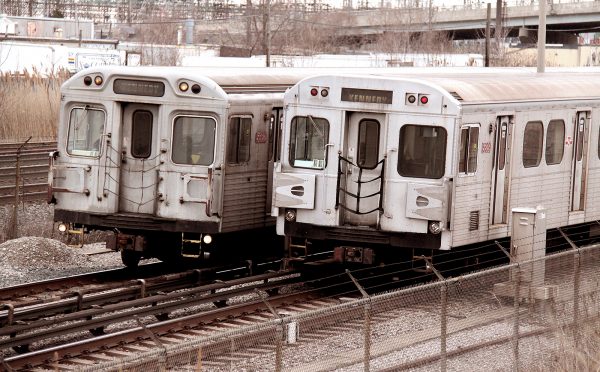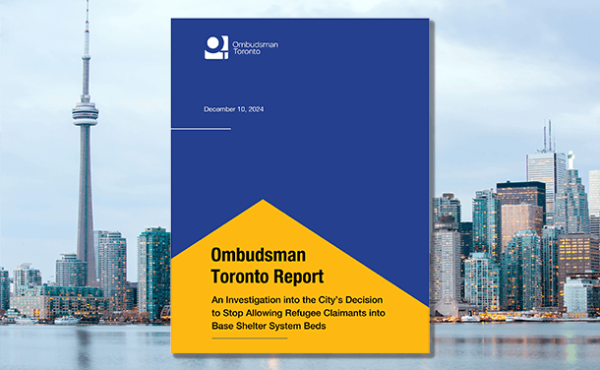It can’t be said too often, or too loudly: Premier Doug Ford’s pledge to upload the subway system will become the Brexit of Toronto politics: a promise balanced on the most dubious of mandates, barely scrutinized during the election (I’m looking at you, Andrea Horwath and Kathleen Wynne) and certain to deliver administrative chaos, political conflict and planning gridlock for years to come.
Indeed, let’s be frank about what’s about to occur: the Progressive Conservative government is preparing to steal (and perhaps eventually flip) a multi-billion municipal asset that’s been heavily funded by Toronto taxpayers and commuters for decades. Ford last week re-confirmed that he would proceed in a response to a milquetoast request for consultation from Mayor John Tory.
Council is meeting today to figure out a legal response to the Tories’ decision to slash the number of wards in the middle of an election. But why the subway upload threat isn’t the topic on everyone’s lips right now is beyond me. Make no mistake: this, and not the size of council, is the move that changes everything. And anyone who doubts that claim should go to New York City and observe the extravagant mess created in a subway system that’s been starved and mis-managed by a neglectful state government.
Given that neither mayoral candidate nor city council has bothered to fill the information void about the implications of a subway upload, here’s a partial list of what will be lurking inside this Pandora’s box:
The Leaking Fare Box
If the province wants to detach one part of a deeply integrated transit network, it will presumably want the subway’s revenues, which means someone is going to have to figure out a formula for allocating fare revenue among the modes – a wicked problem if there ever was one. Just consider this: If you take the bus to a subway station and then finish your journey on a streetcar, which part of your $3.25 fare paid for that middle portion?
(Clarification: The Tories claimed during the election they’d only upload the asset and let the TTC continue operating the subways. As the Toronto Star‘s transportation reporter Ben Spurr pointed out this morning, government officials have made ambiguous statements in the past week about the full extent of what’s envisioned. Transportation minister John Yakabuski said everything was on the table, but a spokesperson later insisted the upload is limited only to the ownership of the assets.)
The TTC in 2017 generated $1.2 billion from fares and the subways carried 230 million passengers. But it’s not clear how to divvy up the revenue, particularly because the TTC’s network of feeder bus and streetcar routes is so crucial to getting bodies onto the subway. What is generally understood is that some portions of the subway are very profitable, and their surpluses help subsidize the rest of the system, including those parts of the subway network that lose money (e.g., Sheppard, parts of Bloor-Danforth, Spadina). Removing it will make the rest of the TTC a lot more expensive to operate.
Now let’s think about the City of Toronto’s $750 million operating grant to the TTC – the second largest line item on the municipal operating budget. What portion of that giant subsidy goes towards supporting subway operations? Again, the answer is not obvious. Yet what seems perfectly evident is that if the province uploads the subway, council’s funding of what remains of the TTC will shrink.
Last point here. Who decides on the formula? Or are we looking at shifting to a system where you pay one fare for the buses and streetcars, and another when you transfer to the subway, as is the case with GO and the TTC now. If the Ford government wants this asset, it will want the revenues . Yet the quantum of those revenues are determined entirely by Toronto council and the TTC (for those with short memories, the Mike Harris government ended provincial operating subsidy to the TTC in 1997). Somehow, the formula will need to be negotiated, and it’s anybody’s guess how those talks will play out.
The Liability Landmine
The TTC’s balance sheet notes that the subway system had a net book value in 2017 of $2.3 billion (i.e., after depreciation). That figure doesn’t include the value of the rolling stock and the tracks. It’s a big, expensive asset, with equally formidable liabilities.
Almost a quarter of the City’s $39 billion ten-year capital budget will be spent on the TTC between now and 2027 (the figure doesn’t include Smart Track). New-build projects like the Scarborough Subway Extension will receive a portion of that total, but 92% of the $39 billion represent outlays for either state-of-good-repair or legislated projects. And according to the TTC’s 2018-2027 capital budget report, $5.2 billion will go to subway expenditures (page 14).
That $5.2 billion is all for the unsexy aspects of owning a subway: signal upgrades, track repairs, new subway cars, etc. This is a long-term financial obligation on the owner of the system. In other words, if the province wants to assume control of the subway, all those mainly debt-funded liabilities – repairs, replacement of aging rolling stock, etc. – come with the package. You don’t get one without the other. In other words, the Ford government is going to have to add at least $5 billion in new debt to its books — a story that likely won’t go down so well in small town Ontario.
Remember, too, that council in the dying days of the Rob Ford administration approved a property tax levy that will raise about $1 billion over 30 years for the construction of the $3.65 billion Scarborough extension. If the province scoops the subway, there’s no reason I can imagine why council would continue collecting that levy. (As an experiment, ask your ward councilor and the mayoral candidates if they’d support continuing with this tax in the event of an upload.) If a post-subway council decides to turn off that funding tap, Doug Ford & Co. will have to find a further $1 billion to bring subway service to the deserving folk of Scarborough — hardly what Ford is aiming to do with the provincial budget.
The Workforce Mess
When you see a TTC employee in a ticket booth, or a cleaner working at a subway station, or an inspector monitoring fare compliance, ask yourself which portion of their time can be attributed to the subway’s operations, the bus network or the streetcars. With senior planning and procurement personnel at the TTC’s head office, one can pose the same question: which aspects of their duties involve the subways, and which have to do with the rest of the system?
Sure, there are TTC employees who only work in the subway system. But there are lots of other TTC staff – both in the bargaining unit and in management – whose responsibilities span all the modes. Which, of course, is a rational, efficient and, frankly, sane way of running an integrated transit system.
Trying to surgically remove the portion involved in operating the subway is like trying to figure out how many vertebrae can be removed from a spine before the whole body collapses under its own weight.
Yet this is what awaits us. Ask anyone in the investment banking/leveraged buy-out world how tough corporate carve-outs are. It’s rarely easy hiving off a portion of a corporation. But in an organization like the TTC, where the service lines are so intertwined, the task will be mind-bogglingly complex.
The excising process, however, will produce much costly and unproductive work for management consultants and HR specialists. Creating two organizations to do the work of one, moreover, means duplication and additional operating expense, not the opposite.
Now think about the labour relations piece: If Ford hopes his hived off subwayco will be non-unionized, he’s delusional. What’s more, thanks to the advocacy of Ford and his late brother, Dalton McGuinty’s Liberals made the TTC an essential service back in 2011. What that policy means is that while the Amalgamated Transit Union (Local 113) can’t strike to protest the provincial upload and the division of the TTC’s bargaining unit, contract negotiations for the new local serving Toronto Subway Co. will certainly end up with an arbitrator, who will impose a contract identicals to the one the TTC now has.
So even if the province intends to merge the subway with GO Transit, the management and payroll costs of running the lines will go up because the economies of scale of an integrated operation are lost.
The Planning Nightmare
Where to begin?
The subway system, for all the obvious reasons, is deeply embedded in the city’s planning mechanisms, from the official plan to secondary plans to local zoning bylaws. A shift in ownership doesn’t change the physical reality of the subway’s presence in and under the city, but it does raise all manner of thorny questions about how the province intends to carry out planning around everything from maintenance-related or emergency subway closures to public consultations for expansions, service level changes, etc.
There are financial reverberations here as well, given that the city allocates a portion of millions collected through development charges (DC) to transit capital outlays (35 and 44% of the levies collected from residential and commercial projects respectively go to the TTC’s capital budget; the city expects to collect a total of $1.34 billion through DCs over the next decade). If the city is no longer responsible for paying for the subway, the building industry will probably want to renegotiate those levies.
Then there are all the problems associated with inter-agency planning, which is where the upload takes us. GO Transit and the TTC have historically had a great deal of difficulty working together, although that’s begun to change. But under this new arrangement, the two levels will have to set up an elaborate system of intergovernmental mechanisms to deal with everything from access to the subway stations to coordinating road closures relating to the construction of new lines.
At the macro level, which is no doubt where Ford’s attention is focused, the province will be able to prioritize new capital projects, presumably to reward specific constituencies. I’d say it’s a given that the Relief Line will be sent to the back of the queue indefinitely while new subways out to Richmond Hill and other remote locales will be prioritized. Such moves, as many critics have warned for years, will eventually cause the system to become critically over-crowded, unsafe and unusable. The best one can say about that scenario is that the Tories will have no one to blame but themselves. They broke it, so they’ll own it. However, the city, its residents and its businesses will pay dearly in the long run.
So What Now?
There’s little doubt Queen’s Park has the jurisdictional authority to upload the subway. But when it does, it will also have to take on the billions of dollars in financial responsibilities associated with the care and feeding of one of the largest pieces of transportation infrastructure in the province. Like a contaminated piece of brownfield land, the future cost of cleaning it up travels with the title. (To choose another analogy, the upload will be the inverse of the Harris government’s move to download Ontario’s social housing complexes, with their extravagantly costly repair bills, on the city back in the late 1990s.)
So what now?
Although the legislature has risen from its dizzying special summer session, it would hardly be surprising to discover that Ford — who has displayed an increasingly unhealthy instinct to meddle in the business of Toronto council — intends to fast-track the subway upload and ram a law through during the miasma of the municipal election season.
But until the legislature resumes sitting, Toronto politicians have a very short window of opportunity, during which they can frame this move in the way it desperately needs to be framed. Sooner or later, Ford will fill the void with misinformation – all the usual blather about finding efficiencies and involving the private sector.
For municipal officials to sit back and wait for that to happen would be a critical, city-altering mistake. City officials know just what a mess the upload will create, and they are in a position to quantify to residents – in Toronto and beyond – the full financial implications, for both the province and the city.
Mostly, I want to hear what John Tory and Jennifer Keesmaat have to say. Given what’s at stake, their messages should be a lot more robust than delicately asking to be consulted. Will they demand financial compensation for Toronto taxpayers who’ve invested in this asset for years? Threaten legal action? Rally residents? Take to the airwaves? And are they prepared to make it abundantly clear to Ford that his Tories will feel the political blowback in Toronto’s 25 ridings for years to come if he proceeds?
I am hoping the answer is yes to all of the above. After all, this development will occur on the watch of one of the two individuals running for the city’s highest office. Certainly, I know if it were me, I wouldn’t want to go down in Toronto history as the mayor who lost the subway.






4 comments
Great article, as always John. However, isn’t it far more simple than all that – On transit, Doug Ford has no idea what he’s talking about! Seriously!
This is a good alarm; thanks, and timely as we go backwards and FOrdwards in the election chaos, it is difficult to get attention to the shift and shaft of things being broken up, even when it makes no sense, which is the case with the subways and the TTC, as it is very integrated with buses feeding in to the robust transit. The flipping/selling of the seized/stolen assets however, may be far sooner than not, as it’s gotta be about the money, not any efficiency. Efficiency and wise use of taxpayers monies would mean scrapping the Scarborough Subway Extension, and more importantly, having real info and discussion about how cars are subsidized far far more than transit, anathema to both the Carservatives and Carswervatives, and even the Votorists’ party too. (see vtpi.org for info – it’s too carrupt in Ontcario to have honest discussion/facts, though our health care budget is bloated from car costs as one example of subsidy).
Possibly a compromise might be to let the province have the Sheppard stubway, and most of the Spadina leg, but especially north of York University, and why not some of the new sections of the Yonge line, so we could start to stop service to Richmond Hill, as a nudge to get regional travel met by regional services like, for instance, GO, vs. degrading a local service further.
As the TTC board has gone along with the SSE, and has enabled design work for Richmond Hill extension, I don’t think most of them will be up for the task of transit defence being on the feckless and desulTory side of things, following the ‘lead’ of the Council on this, which isn’t great, mostly as they’ve let the RH Extension rumble along, oblivious to the politricks of suburban transit extension being far more likely to get funding from suburban governments than needed core relief.
So we could see the core system sold after seizure/stealing to finance the Richmond Hill line eh? And that would be an extra fare, like a remortgaging after a new owner ‘renos’ an apartment….
Does Doug Ford even use the TTC, or any public transit, on a regular basis. I don’t mean photo ops.
Instead, he complains that traffic is congested when he DRIVES to his private parking spot behind Queens Park. Even though there is an express bus available near his house, and there even a subway station (called Queens Park) with an underground private walkway to the legislative building. Guess he doesn’t want to mingle with the unwashed underclasses.
Now he, a non-transit user, wants to direct how to run public transit in the GTA? Only transit users should be on any transit board.
Seeming as Toronto proper can’t seem to do good job of properly strategizing the use and growth of the subway, it occurs to me that a change in ownership might be a good thing. Toronto has consistently politicized the growth of the subway and consequently utterly botched the job.
Sorry Toronto city government; you had your decades-long opportunity, and it’s over now. Good riddance.
I’m no fan of Ford, but bring on provincial ownership.